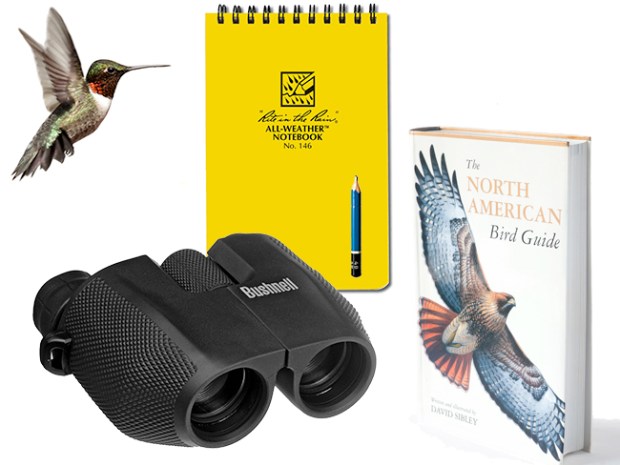How to Get Started Birdwatching

Birdwatching can be a fun pastime. More than 800 species of birds migrate across or breed in North America. They range from the massive California condor with a wingspan of 9 feet to the tiny calliope hummingbird, which measures about 3 inches long. You’ll find some birds almost everywhere, while others live only in certain places.
It can be exciting to find a rare species. Studying habitats increases your odds for finding birds. Specific species have preferred food sources and hiding and nesting areas. Some birds make parks and backyards their homes, while others gravitate toward marshlands or mountains.
WHAT YOU’LL NEED
• Binoculars: Look for a pair that is waterproof, is comfortable in your hand and has at least 8x magnification. You can borrow some until you’re ready to buy your own.
• Field guide: A bird guide will help you identify what you’re seeing. There’s information about specific birds, bird families, migration patterns and much more. You could also try a birding app to see which species have recently been spotted in your state. Some smartphone apps can help identify birds by their calls.
• A notebook and pencil to keep a log of all the species you find.

HEADING OUT TO GO BIRDWATCHING
1. Use your bird guide, smartphone app or an online resource to research birds you’d like to find in your area.
2. Start in your own backyard, or head to a nearby park with lots of trees and plenty of open space. When in parks or wildlife refuges, stay on the trails and observe from a distance so you don’t disturb nests. The best time to go is early in the morning or late in the afternoon when many species are most active.
3. Move slowly and quietly, listening carefully. Find a place to sit or stand that has a good view of everything around you. Look around for birds.
4. Once you spot a bird, study it. Find the most obvious detail about it. White wings? Yellow markings? Big crest? Write down what you observe, including the bird’s color, size, shape, sounds and habits. You can also take a photo or try drawing the birds for future reference. Those details will help you identify them. As you spend more time birding, you’ll be able to identify birds more quickly and easily.
5. Use your notebook or an app to keep a log of all the species you find.
6. You’re officially birdwatching, so you’re a birder. Keep at it! The more often you go out, the more you’ll discover.
WHY BIRDING?
Birdwatching can be a fun hobby that brings you closer to nature. In fact, birding is one of the country’s fastest-growing hobbies, with more than 65 million Americans actively involved.
Many of the most important scientific discoveries about birds were made by amateur birders. Get out there and make your own valuable contribution to science. You can also earn the Bird Study merit badge, by which you’ll identify at least 20 species of wild birds. Find a counselor to get started.
The bird is the word
My life-list (# of bird species you’ve seen in birding language) is 246 at the moment. I strongly visiting ebird’s site and making an account, as there is so much more there than just seeing what local species there are. Good luck on your birding journey!
I love bird watching.
I got an 100! I am proud of myself. I am a marine biologist, not a bird 🐦 watcher!
the bird is cool